“3 Concrete”@ Kendall Art Center
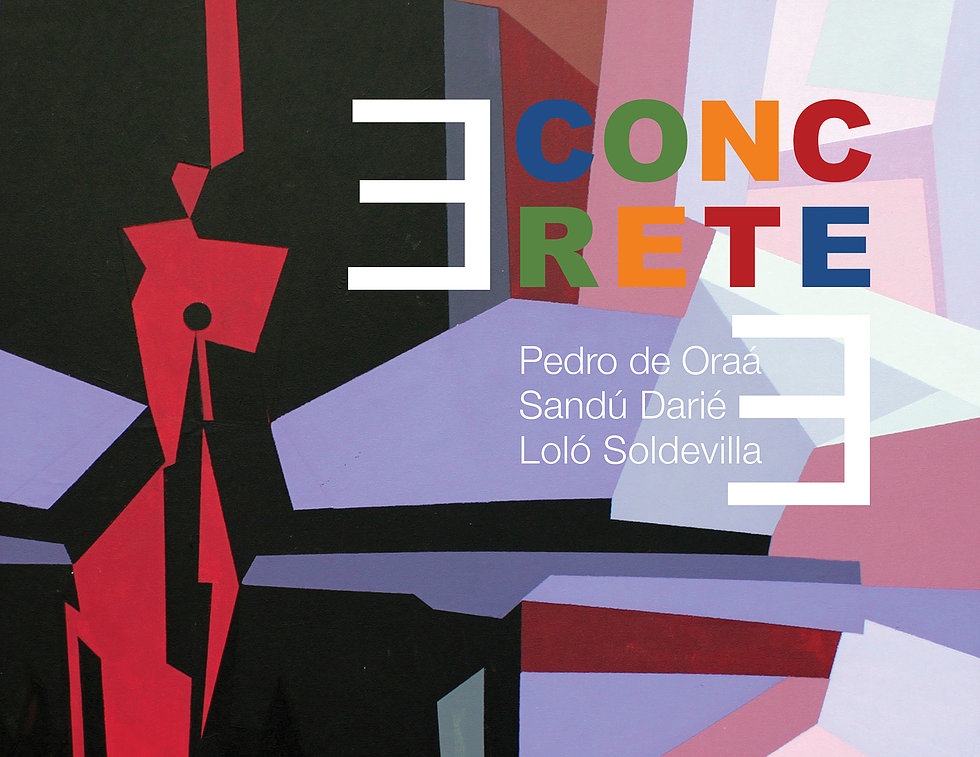
3 Concrete
by Odette Artiles
“An abstract artist perceives and deciphers reality as interiorization and not as environment and surface. Reality is changing and relative, but the object of abstraction is to fix it in its invisible aspect. The abstract object is installed in the space of reality—whether painting, sculpture, or other created form—and becomes an unknown object, but real and concrete in its space.”
-Pedro de Oraá1
The majority of what is named in art history as those key moments of ingenuity and originality usually began as instances where such detachment from the academia was condemned and took, in many cases, a lifetime to become acknowledged. 3Concrete, a momentous new exhibition at the Kendall Art Center, is one such example. 3Concrete begets an almost-forgotten moment of Cuban art history, showcasing the work of Los Diez Pintores Concretos (The 10 concrete painters), a group that established the style of ‘Concretism’ or ‘Concrete’ art in 1950s Cuba and fashioned a whole new, unique language of abstraction. The three exhibited artists, Sandú Darié, Loló Soldevilla, and Pedro de Oraá, constituted the original founding members of Los Diez.
Cuban concrete abstract art has long been an omission in the nation’s art history, ironically invisible despite the flowering, it enjoyed, as well as its strong impact in the 1950s. Prior to this new generation, Cuban art in the 1930s and 40s was steeped in a sweetened allegorical, idealized style known as the vanguard (avant-garde), which identified itself through its nationalist esthetic. The 1950s abstract scene was an artistic rebellion against a complacently, academic ‘Cuban’ fashion of art, whose practitioners accused Concretism of being “…dehumanizing, foreign,”2 due to its mélange of international sources in addition to being labeled as sycophantic to their oppressors—The work of Los Diez is the culmination of a gathering of influences from travels around Europe and Latin America, making their work the fruit of marriages between different philosophies and aesthetics of multiple movements from Paris, Brazil, Chile, Argentina etc., including Cubism, Constructivism, Kandinsky and the utopian themes of Mondrian.3 While ‘Concretism’ was left without official support, its transformation was nonetheless upheld and completed through the formation of Los Diez whose beginning and ending followed and fluctuated with the political, social and cultural transitions and upheavals of the times, from Batista’s coup to Fidel Castro’s rise to power, creating one of the most influential Cuban artistic traditions within the tiniest speck of the nation’s history: from 1958-1961. The sentiment towards the concrete arts both pre- and post- 1959 revolution, questioned the abstract language as being distant from the people and ignorant of societal needs, in favor of the figurative and its commitment to reality. Critics could not understand why some of the most prolific painters, well instructed in proper ‘techniques’ and ‘good painting,’ were exhibiting works that were little more than a mish-mash of shapes and colors, a line of thought which eventually silenced the abstract movement by 1961, and then obscured it into oblivion.
While Los Diez followed the same style and aesthetic, Concretism was expressed differently by each of the three artists, each influenced by their own, unique extensive travels and study of a variety of movements. Sandú Darié, an artist of Romanian heritage, helped introduce Concretism to Cuba with his Havana exhibition of only eight pieces in 1949. He was born in Romania in 1908 and trained initially as a lawyer but soon took up painting after a stint in Paris and close contact with the Romanian avant-garde. He then immigrated to Cuba in 1941 where he lived out his remaining years.4 He was an active and pivotal member of Los Diez, credited with being the first to propose the first concrete art exhibition in the nation. Darié was an avid, passionate artist, keen on taking concrete abstraction and expanding it in a way where one piece becomes multiple and the harmony of primary colors becomes all but entrancing to the eye. A versatile artist, his career boasts of paintings and energetic kinetic sculptures, of which he crafted to be manipulated in a variety of ways; flipping and turning different parts of the wooden “triangular relief”5 to reveal an entirely new work hidden beneath the original, creating a subjectivist doctrine of reality. A three-dimensional Mondrian if you will. Of the three, Darié is definitely the most interesting in the context of no two pieces can be mistaken for one another despite their thematic harmony. The inventive ways that his intersecting geometric forms move and communicate with each other within the works is uniquely distinctive amongst the three; a jigsaw of rigid shapes engineered to shift one’s perspective with a chameleonic, new piece contained in the old, representing a different way of looking at the same world, a new reality connected to and yet different from the old, completely intertwined and new for its time.
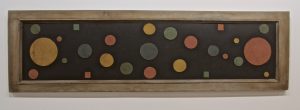
Loló Soldevilla was born in Cuba in 1901 and is considered to be a decisive figure in Concrete Cuban art. On a trip to Paris in 1949, she encountered contemporary European avant-garde artistic practices— namely, abstraction, and upon her return to Cuba, Soldevilla and her contemporary Pedro de Oraá founded Galeria Color-Luz—a gallery solely dedicated to the promotion of abstract art in 1957—whose closing marked the official disbandment of Los Diez in 1961.6 Her works abound with an indication of a strong interest in geometric forms expressed through painting, sculpture and collage work. Her pregnant shapes are elegantly defined as opposed to her contemporaries; there is something inherently delicate and female about her circles and swirls, with an underlying surety in her bright colors and asymmetric yet gratifying sculptures. Soldevilla was a devoted student of collage work, a distinctive medium and skill, which she masterfully utilized to create pieces with different levels of reality, a congregation of different materials which slowly come to form a mockup of a new world. Her unique landscapes of primary circles and curves against dark backgrounds are reminiscent of the cosmos, making her pieces tangible galaxies that have yet to be discovered. Soldevilla was like a stone thrown to water, a force considered to be the irrefutable face of the contributions of concrete abstraction to the Cuban artistic tradition.
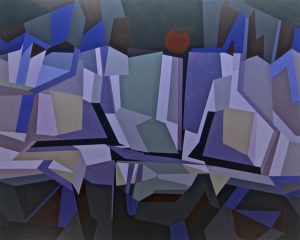
Pedro de Oraá, the last of the founding members, was born in Cuba in 1931 and is acknowledged as one of the most prominent, prolific and experimental artists of the Concrete movement, with a career spanning more than fifty years. His pieces work with interlocking, overlapping geometric shapes that explore new ways of playing with concrete abstract forms. Due to being the last living testament of this obscure period in Cuban art history, Oraá states that the present boom Cuban abstraction is enjoying in present times, is subsequently bringing forth to light many artists and works once systematically undervalued and erased from Cuban history7 due to political pressures, as well as the exodus and Diaspora of the many artists who did not agree with the radical turns of the revolution. Oraá’s dynamic, sharp compositions are the obvious manifestation of Concretism’s main aesthetic: hard-edged geometric forms. Their puzzle-like compilations of monochromatic or analogous colored shapes are highlighted through their complete takeover of the canvas. Jagged, linear, amorphous blocks and daggers, lone circles and lines become radical, prismatic pockets of reality and space finding pause only at the canvas’s edge. While Oraá’s works at first glance are just a pooling of shapes, there is something rather beautiful about its execution. The harmonious tones, the nonobjective transparency is evident in the way where one can glean something completely different from the neighbor viewing beside them. A unique panorama of silent geometry, although the canvas is full there is no cacophony of sounds, dynamism despite its sharpness, just a remarkable, singular tranquility.
‘Concrete abstraction’ differentiates from other forms of abstraction due to its lack of representational or drawn-from-life references. Most notably it is a style without narrative or natural connections; the style is characterized through it’s intrinsic, self-contained and introverted nature, whose appreciation lies solely within its geometric compositions, colors and materials.8
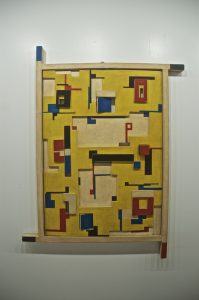
“This is concrete painting because each painting is a new reality,”9 stated Sandú Darié, highlighting the movement’s intellectual construct that employs a simplification of forms to hard-edged shapes and colors, resulting in a new form of “political and social engagement”10 and an irrevocable expression of Cubania. In short, Los Diez’s were concerned with intensifying the art experience through rationalism as opposed to often manipulated and arbitrary showcases of nationalism; they “…moved abstraction from purely visual, formal concerns toward conceptual and phenomenological ends, in line with other contemporaneous international art movements, to engage both the viewer and the broader collective conscience of Cuba.”11 Although it is defined as being separate from the dictates of other forms of abstraction and atypical of the vanguardist nationalistic trope, many pieces follow and carry that need to connect to their roots, continuing the spirit of that generation of Wilfredo Lam and Amelia Peláez of the 1920’s and 30s. No matter how hard the Concrete artists tried to distance themselves from the vanguardist nationalism, that detachment was never absolute as traces of the old style lives within their hard world of geometry. “I recognize the connection, the influence and see that through their works, they uphold something distinctly Cuban,” says Henry Ballate, curator of the exhibition and art director of the Rodriguez Collection. “I see a little of Amelia Peláez and Lam in Oraá, the same recurring elements in several works that identify the Cubania,” Henry continues, something which they prove, cannot just be forgotten. As a collector, Leonardo Rodríguez isolates the most important moments in Cuban art history and collects avidly, his main interests being art from the 50s and 80s. From the 50s his preference is the Concretos, or the concrete abstractionists, which he believes is one of the most important of the Cuban artistic traditions. Leonardo’s appreciation of this undervalued moment in art history is part of the ‘great boom’ being enjoyed by these artists both living and passed in receiving the recognition and acknowledgment denied to them during their careers, as one of the most honest and orthodox ways of looking at reality and the passage of time.
1. Hernández, Lianet. “Pedro De Oraá: ‘Concrete’ Thinking on Cuban Abstract Art.” Cuban Art News, (2016).
2. Diezcasas, Rafael. “The Silent Shout: Voices in Cuban Abstraction 1950 -2013. Hugo Consuegra, Sandu Darie, Carlos Garcia, Luis Enrique Lopez, Raul Martinez, Pedro de Oraa, Jose Rosabal, Lolo Soldevilla, Jose Angel Vincench.”
3. Diezcasas, Rafael.
4. Smith, Roberta. ‘Concrete Cuba’ Visits a Quieter Period of Latin American Modernism.” New York Times. (2016).
5. Smith, Roberta.
6. Morris, Ali. “Concrete Cuba: a new London exhibition celebrates Diez Pintores Concretos.” Wallpaper.com (2015).
7. Hernández, Lianet.
8. Smith, Roberta.
9. McEwen, Abigail. “Revolutionary Horizons: Art and Polemics in 1950s Cuba.” Book, (2016).
10. McEwen, Abigail. “Concrete Cuba”. David Zwirner Gallery Press Release. (2016).
11. McEwen, Abigail.
catalog
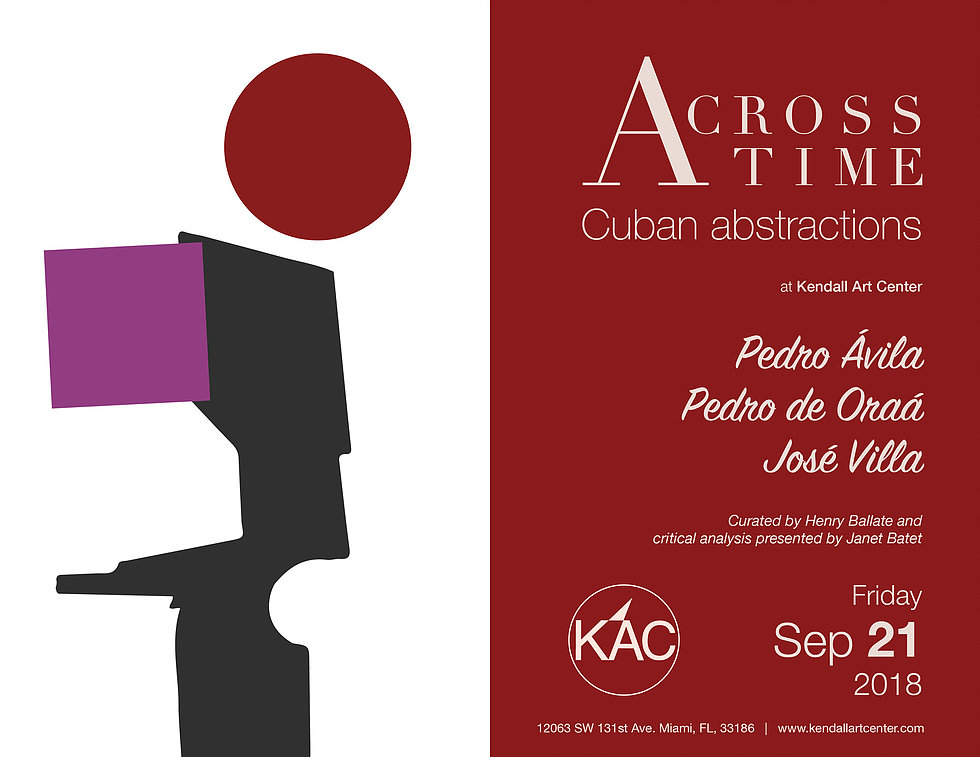
Kendall Art Center is proud to present “Across Time: Cuban Abstractions,
” featuring the work of three Cuban artists with solid trajectories deeply rooted in the abstract language. Pedro Avila, Pedro de Oraá, José Villa.
The irruption of abstraction radically transformed the course of 20th-century art. The eradication of illusionistic referents inaugurated a universal language ruled by laws of arts rather than those of nature achieving the long-promised goal of modern art as an autonomous practice.
In Cuba, the entrance of abstraction implied -for the very first time- the synchronization with international isms and a revolution itself within the Cuban art history. Nucleated around two fundamental groups (Los Once and Pintores Concretos), abstract artists in 1950s Cuba coexisted with two earliest avant-garde generations (Generación del 27 y Generación del 40). Even tough, cosmopolitan modern architecture in Havana in the 50s appears as the perfect backstage for abstraction, the reticence to accept this new avant-garde turn of Cuban art that renounced the well-served precept of national identity (cubanidad) set the tone of criticism about Cuban abstract art.
The Cuban abstractionist movement has been historically stigmatized by misunderstanding, leading to the persistent mistake of classifying this movement as a punctual or transitional stage, reducing the impact of one of the most significant expressions of the national artistic tradition.

Across Time: Cuban Abstractions presents the recent work of three Cuban artists with solid trajectories deeply rooted in the abstract language. With an artistic trajectory of more than seven decades, Pedro de Oraá (Havana, 1931) is one of the pioneer figures of Cuban abstract movement. In 1957, along with Loló Soldevilla, de Oraá founded the gallery Color-Luz and a year later, in 1958, join Diez Pintores Concretos (1958-1961). Pedro de Oraá early work seems to be seconded by the biomorphic abstraction where flowing forms cohabit in the vast pictorial space. Gradually, these sort of organic entities evolves, growing in size and structure, covering the canvas and the relationship between them becomes more cohesive. In his most recent paintings, de Oraá constricts the palette being almost monochrome. Focused on the black and white, the artist explores the different shades of each color in a kaleidoscopic vision where the geometric structure seems to be dynamited. This futuristic feature is directly associated with the artist’s interest on dynamic, evolution and velocity. In the midst of these always evolving faceted landscapes, the sphere -airy and spotless- embodies the cosmic time: the universe.
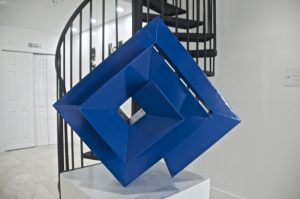
Known by his popular public sculptures around Havana, José Villa (Santiago de Cuba, 1950) has a parallel solid career as the abstract sculptor. If when approaching portraiture, Villa’s work is very realistic with an accent in the psychological traits of the portrayed character, when devoted to his abstract work, his pieces renounce to any anecdotal mannerism, embracing progressive geometric structures. Revolving on its own core, these always clean angular forms enhance the qualities of the chosen material being constructivism and minimalism the key components of these refined works.
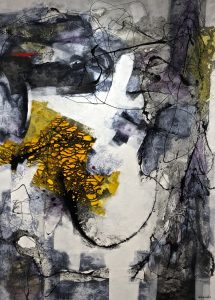
The work of Pedro Avila Gendis (Camaguey, Cuba, 1959) finds in gestural abstraction the needed freedom to express his inner world. In contrast with the self-contained expression that typifies the other two artists included in this show, Avila’s work is a cathartic redemption where the pigment is spontaneously dribbled, splashed or smeared onto the canvas. The use of the carefully chosen color, always in contrast with dripped blacks and buoyant whites, serves to purely expressive purposes opening multiple venues to the viewer.
Across Time is part of that recent and much-needed collective effort to rescue the history of Cuban abstract art and its legacy for generations to come.
Janet Batet
Join us on Friday, September 21, 2018, from 6pm-11pm.
The exhibition will continue until October 26, 2018.
Catalog
Kendall Art Center website
book on the topic
